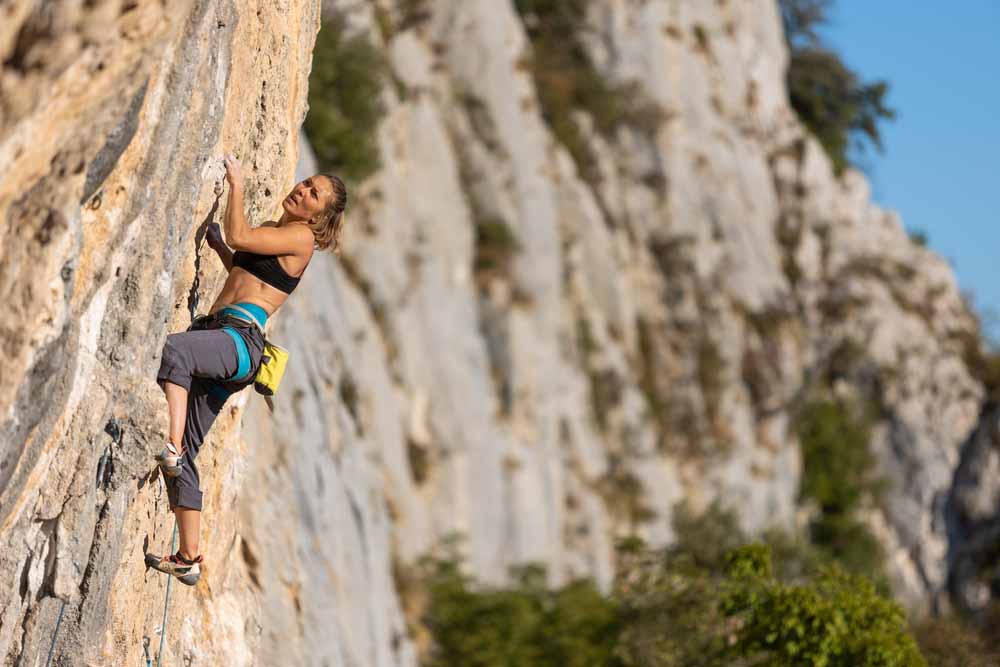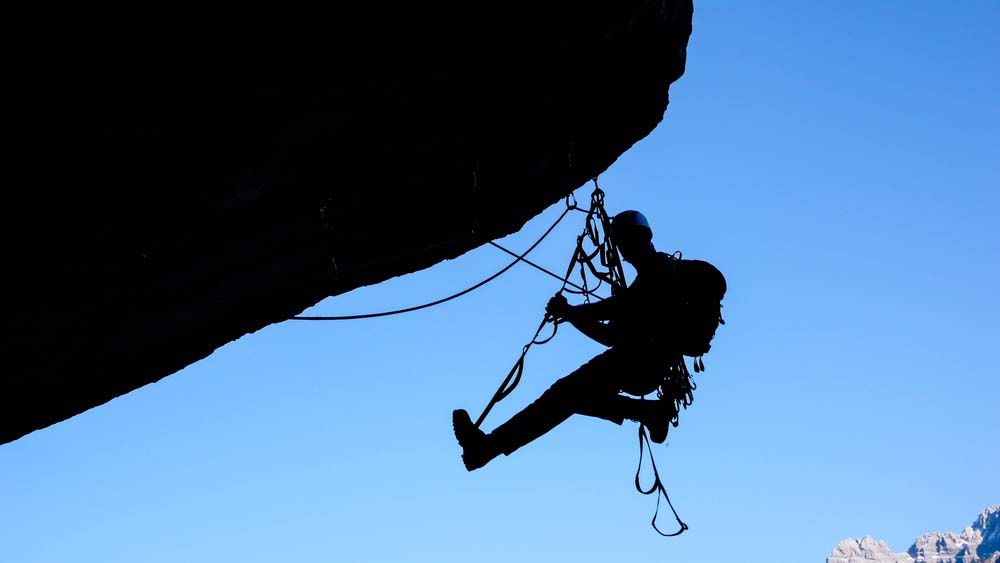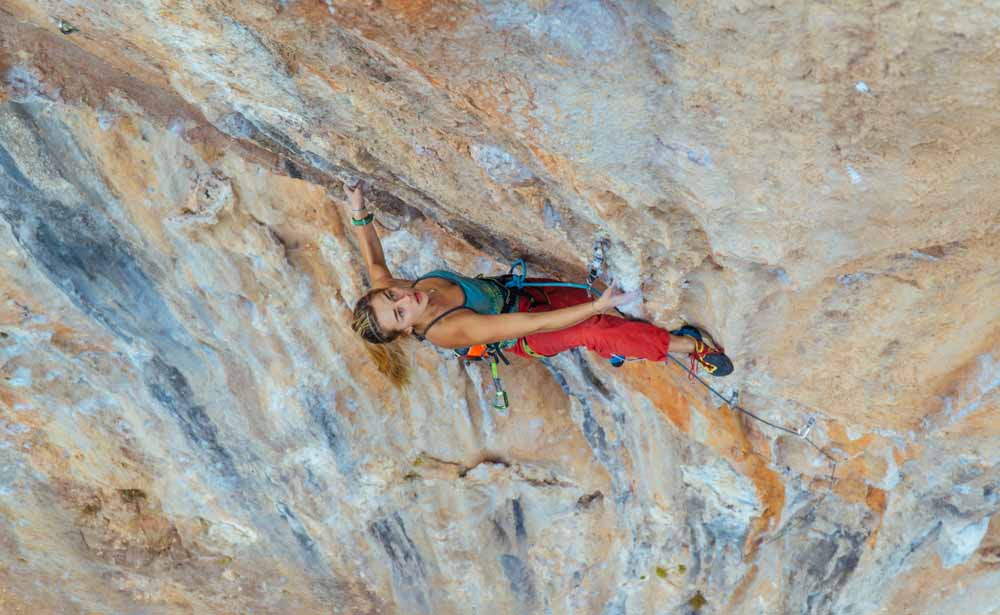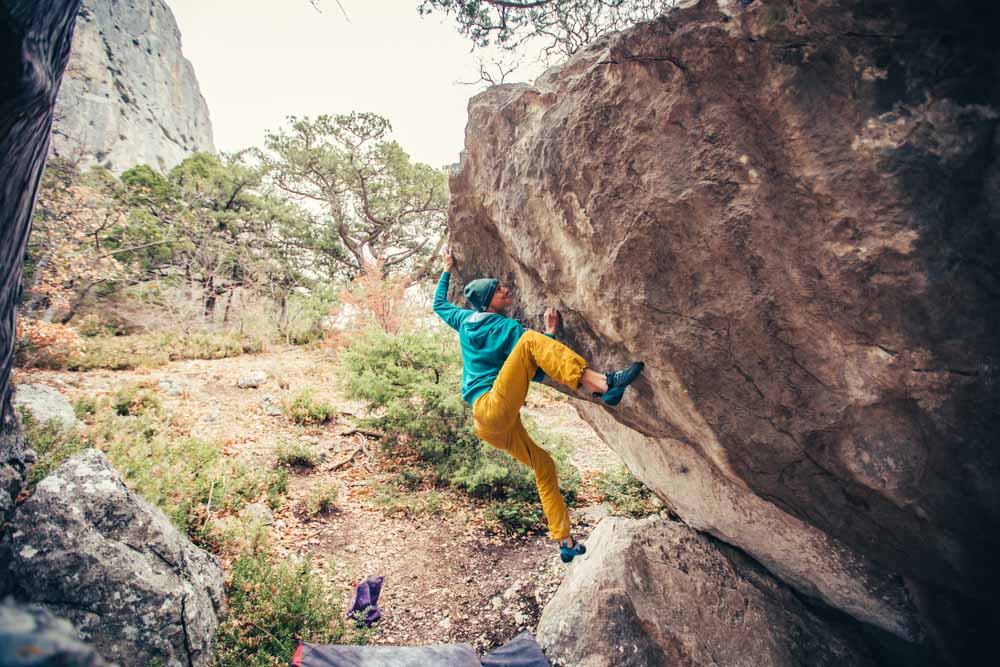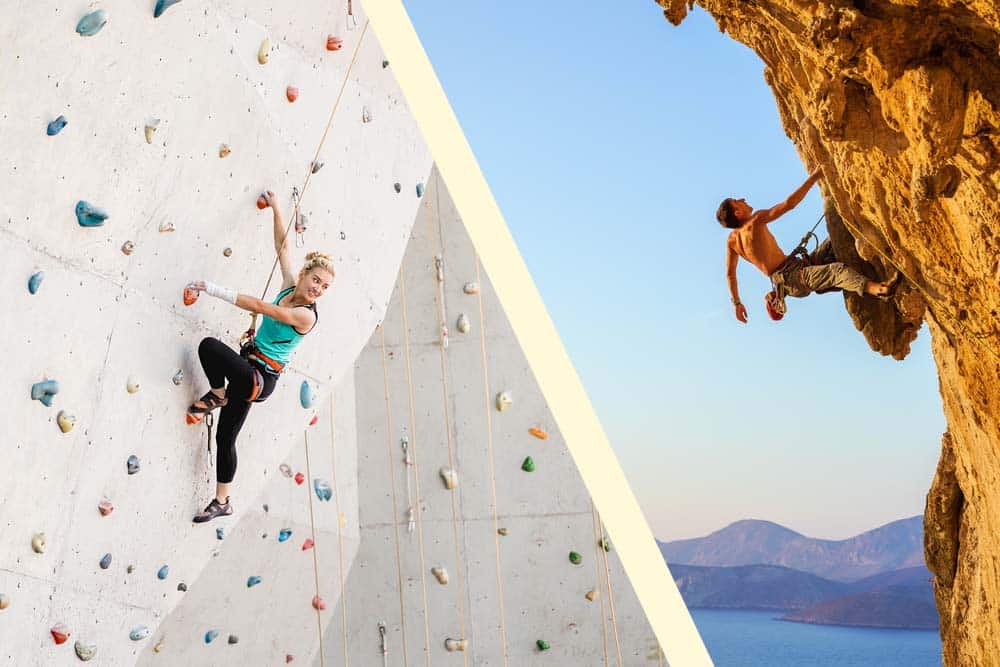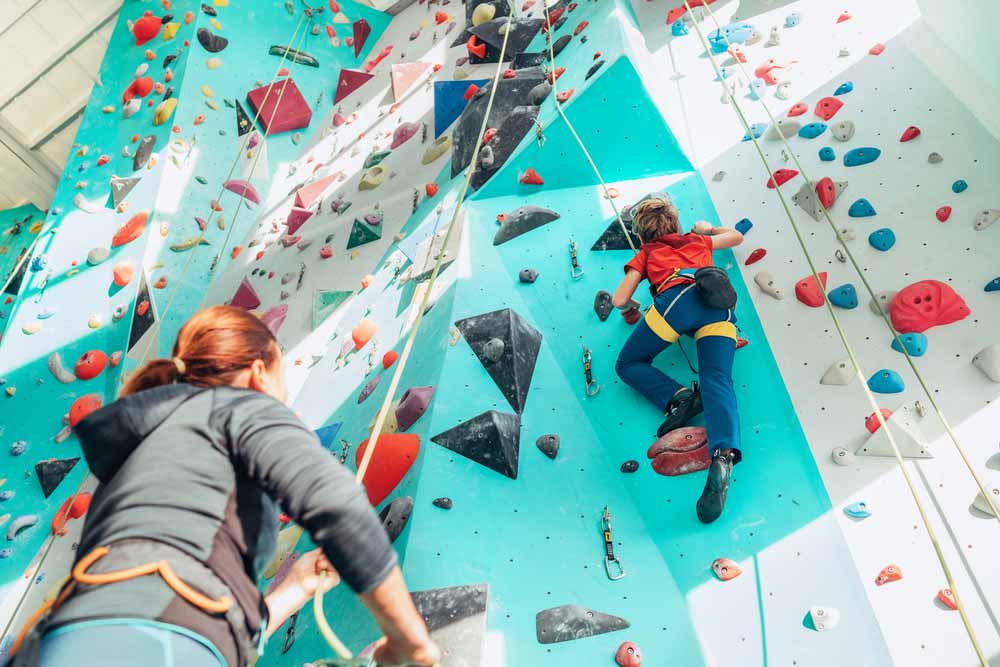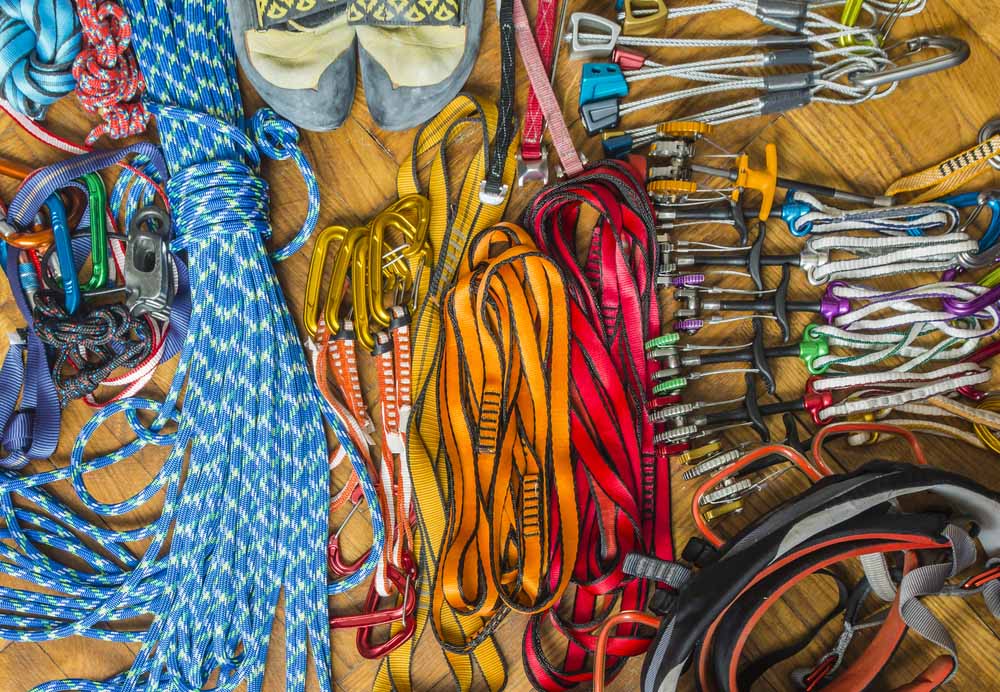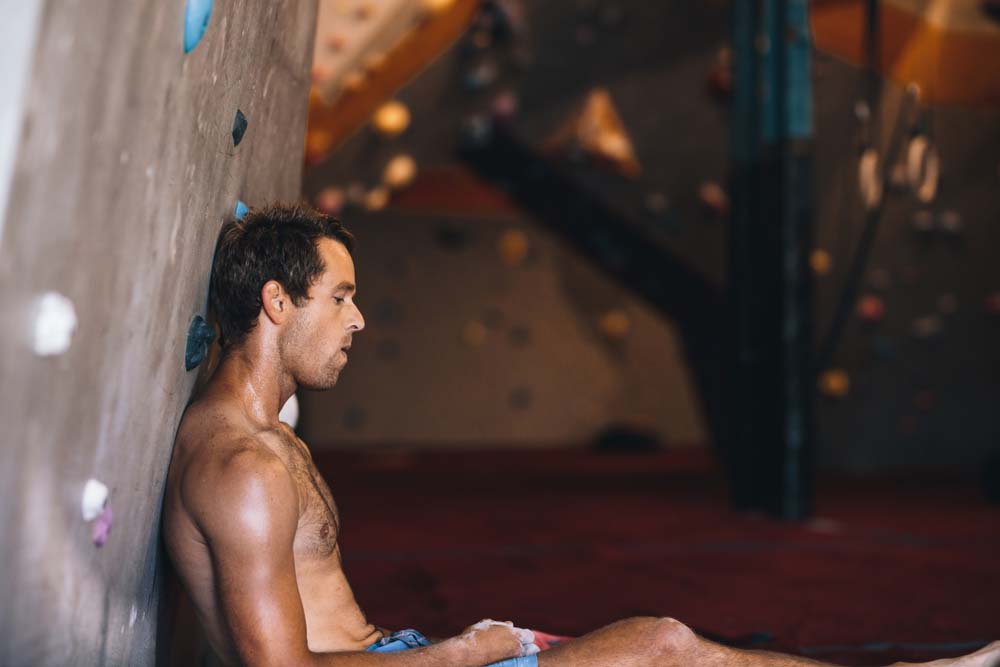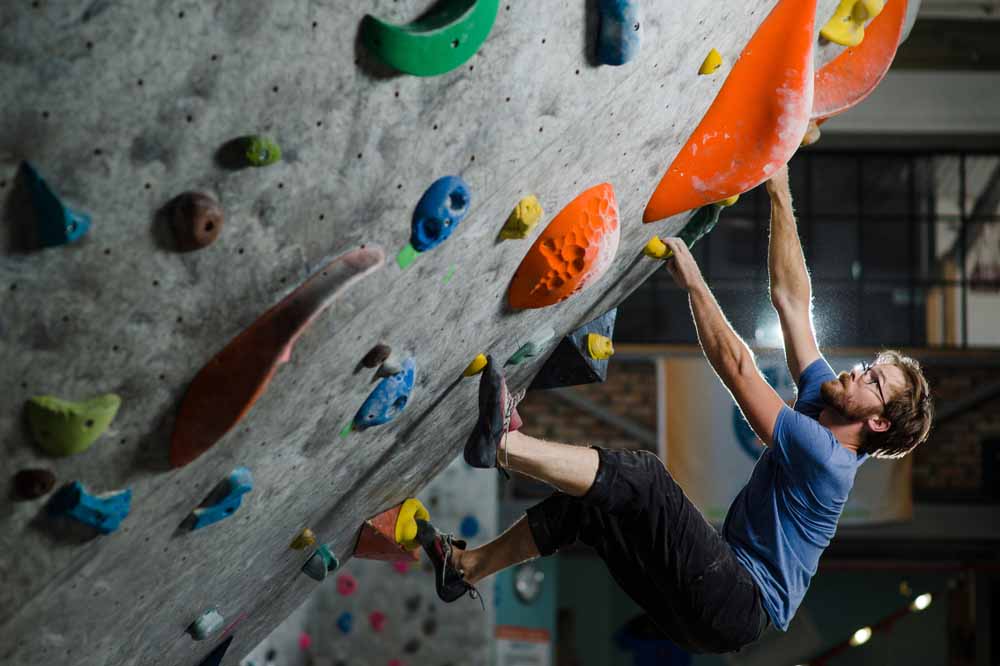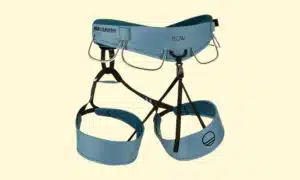Rock climbing has exploded in popularity over the past five years or so. Much of that has to do with blockbuster films like The Dawn Wall and Free Solo bringing what was once a sub-culture sport into the limelight with other mainstream sports like tennis and baseball.
As a result, many people inspired by the films and curious about the sport are wondering how to start rock climbing. For many, that means getting started indoors in one of the many mega-climbing gyms popping up in every major city. For others, it means hiring a guide for a day of outdoor top-roping.
Keep reading if you are curious about rock climbing. This article will help explain some of the intricacies of rock climbing and share some tips for how to get started climbing.
Note: This is a general introduction to rock climbing. For more information on the different climbing disciplines, you can check out our more detailed guides:
- 1. Sport Climbing: Your Guide to Getting Started
- 2. Bouldering Indoors: How to Fall in Love with Climbing
- 3. Trad Climbing: What is it and How to Get Started
- 4. A Beginner’s Guide to Multi-Pitch Climbing
What is Rock Climbing?
Rock climbing is a sport that involves ascending a rock face or artificial rock wall using your hands and feet. It can be done outdoors or indoors, and there are many different types of rock climbing, including aid climbing, traditional climbing, sport climbing, and bouldering.
Rock climbing is a challenging and rewarding activity for people of all ages and abilities. It is a great way to exercise, explore the outdoors, and mentally and physically challenge yourself.
The Different Climbing Disciplines
Since the beginning of the sport, rock climbing has evolved a lot. Back in the day, climbers wore leather boots and wool sweaters, climbed on hemp ropes, and belayed from the hip. Nowadays, climbing equipment is much more advanced, climbing is an Olympic sport, and you can spend a lifetime climbing inside without ever having to go outside.
Over these years of progression, rock climbing has had many iterations. But, in general, rock climbing has four main disciplines.
Aid Climbing
Aid climbing is a type of rock climbing where the climber uses artificial aids, such as pitons, carabiners, ladders, and ropes, to ascend a route. In terms of equipment, it is a more technically demanding form of climbing than free climbing because of the required knowledge (and bravery) to place and clean gear.
Back then, aid climbing techniques were used on routes too difficult or dangerous to climb without aiding equipment. However, over the years, aid climbing has “gone out of style” and has been replaced by traditional climbing and sport climbing.
Traditional Climbing
Traditional climbing, also known as “trad climbing,” is a type of rock climbing where climbers place their own protection and build their own anchors as they ascend the route. This means that the climber must be able to assess the rock quality and place protection that will hold a fall.
Trad climbing was the logical progression from aid climbing. In particular, modern trad climbing techniques and equipment, such as spring-loaded camming devices, allowed climbers to free-climb routes without aiding. Then they could retrieve their gear, leaving nothing like pitons and piton scars in the rock.
Sport Climbing
Sport climbing became popular in the late 1970s and early 80s when climbers wanted to access sections of rock that did not have cracks to place protection. To do so, climbers installed bolts and clipped quickdraws to protect themselves from a large fall.
Therefore, sport climbing is a form of rock climbing where climbers use permanent bolts and anchors fixed to the rock for protection instead of placing trad gear.
Nowadays, sport climbing is one of the most popular forms of climbing because it is relatively safe and accessible. It can be done on various rock types outside and in indoor climbing gyms.
Bouldering
Bouldering is a type of rock climbing done on small rock formations, also known as boulders, without using ropes or harnesses. Instead, boulderers place foam crashpads around the base of the boulder to soften the landing when they fall.
With bouldering, the focus is to practice powerful and gymnastic-type movements. Therefore, typically, boulderers look for the hardest way up the formation instead of the easiest.
Originally, bouldering was an activity climbers performed to stay in shape for larger and longer objectives in the mountains. For example, the early European alpinists trained on the boulders around Fontainebleau, France, to keep their bodies strong for climbs in the Alps.
However, nowadays, bouldering is a sport all by itself. In fact, bouldering is notorious for being one of the hardest disciplines. Therefore, some of the strongest climbers in the world are pure bouldering specialists.
Like sport climbing, bouldering is super popular and accessible. That’s mostly because it’s easy to get started, especially with indoor climbing gyms and is therefore a great choice to start rock climbing.
Indoor vs. Outdoor Climbing
Back in the day, rock climbing was an exclusively outdoor sport. Then, over time, as the sport gained popularity and climbers wanted to climb more (regardless of the weather), indoor training gyms began to pop up.
Initially, indoor climbing gyms were small and dingy basements or attics that dedicated climbers used to train their finger strength when it was too wet or cold outside to climb. But nowadays, indoor climbing has developed into a massive corporate-style business where seasoned climbers train, and beginner rock climbers learn the ropes under one roof.
Indoor Climbing
Indoor rock climbing is quintessentially fancy. At least that’s the case in modern, purpose-built climbing gyms. But I am sure there are some gyms out there that are still characteristically grungy.
Indoor climbing gyms are fancy because they are air-conditioned, have padded floors to protect against nasty ground falls, the sport climbs have perma-draws and anchors, the top ropes come with pre-rigged belay devices, and there is often an assortment of other fitness equipment should you want to lift weights are do a cardio routine.
Indoor climbing gyms are also nice because many have a pro shop where you can consult a salesperson and purchase climbing equipment. In addition, climbing gyms typically have rental equipment you can use if you are new to the sport and don’t have climbing shoes, a harness, or a chalk bag. Access to such venues means you can start rock climbing with relative ease.
Outdoor Climbing
On the other hand, outdoor climbing is characteristically more “real deal.” That’s because you are outside, exposed to the elements and interacting with nature, like insects, other animals, and everything else outside the protection of walls and a roof.
In addition, most outdoor climbing is not pre-equipped like indoors. For bouldering, you must haul your crash pads into the backcountry and build a landing zone to mitigate the risk of bad falls.
On sport routes, you have the luxury of pre-placed bolts, but you must clip your quickdraws and build an anchor. Some routes outside will indeed have perma-draws and anchors, but for the most part, this is not the case.
Then, on trad routes, you need to not only place all your gear but also have to build anchors from scratch. Then, to get down, you must be prepared to walk off the formation and back to the base of the climb unless there is a bolted rappel descent line.
Plus, it goes without saying that the outside is never air-conditioned, and the presence of drinking water and bathrooms is a luxury most crags do not possess.
Basic Equipment to Start Rock Climbing
You need significantly less equipment to get started with indoor climbing than outdoor. That’s because renting any of the gear you might need for your first couple of sessions is possible.
However, eventually, if you keep climbing inside, you’ll want to invest in your own equipment to save money and climb with higher-performance-orientated gear.
To start bouldering inside, you can get away with only a pair of beginner climbing shoes and a chalk bag. But even the chalk bag is not technically necessary. Then, to start rope climbing inside (i.e., top-roping and sport climbing), you must add a harness to the list. What clothing to wear is also extremely straight forward to choose.
On the other hand, transitioning to outdoor climbing requires you to invest in more equipment. With that being said, however, starting to climb outside with a well-equipped partner is one of the best ways to start. That way, you only need your personal climbing equipment like a helmet, harness, climbing shoes, a belay device, and a chalk bag.
Recommended Equipment for Outdoor Rock Climbing
If you want to be autonomous and not rely on other people’s gear, you’ll need to build a collection of climbing gear. And obviously, the discipline of climbing you want to focus on will dictate the gear you buy. If you’re wondering how to start rock climbing and the gear needed, you can check below.
Personal Climbing Equipment
- Helmet
- Harness
- Climbing Shoes
- Belay device
- Chalk bag
Sport Climbing Specific Equipment
-
- Dynamic climbing rope, at least 60 meters long
-
- A rack of quickdraws, normally 12
-
- A clip stick
-
- Anchor building materials
-
- Personal anchor system
Trad Climbing Specific Equipment
-
- Dynamic climbing rope, at least 60 meters long
-
- A rack of active protection like spring-loaded camming devices
-
- A rack of passive protection like stoppers or hexes
-
- A rack of extendable “alpine” quickdraws
-
- A nut tool
-
- Anchor building materials
-
- Personal anchor system
Optional Climbing Equipment
-
- Belaying and rappelling gloves
-
- Belay specs
-
- Climbing tape
-
- A climbing brush
-
- A friction hitch loop for rappelling
-
- A rope bag or tarp
There Are No Fitness Prerequisites to Get Started
For whatever reason, there is a belief that if you want to rock climb, you must already be strong. I hear this a lot from hikers and spectators when I am out climbing with clients.
However, I’ll tell you what I tell the onlookers as they try to explain to me the reasons why they are not strong enough to rock climb– “you climb to get strong. You don’t have to be strong to climb.”
In other words, contrary to popular belief, rock climbing is not one of the “you need experience to get experience” situations. Anyone can start climbing at any time.
That’s because indoor climbing gyms do a fantastic job at creating beginner-friendly terrain. Likewise, if you climb outside, it’s almost always possible to find a boulder with easy problems on it or a wall with beginner routes.
Training Tips After You’ve Started Climbing
If you are like me, after you start rock climbing for the first time, you’ll quickly jump down the rabbit hole and fall in love with the sport– climbing is that fun.
So, if you commit to climbing as a new hobby and want to start climbing all the time, here are some tips to keep in mind.
- Avoid fingerboard and campus boards. It may be tempting to play around on the training equipment in your gym before or after a climbing session. However, avoid fingerboard and campusing because the muscle and tendons in your fingers are not ready for that type of strain.
- Take rest days. When you first start climbing, you’ll be on an exponentially upward trajectory of improvement that will motivate you and keep you climbing. But remember, part of seeing the gains of climbing is resting your body and allowing it to recover 100%.
- Warm up before climbing and stretch afterward. Create good habits of warming up every time before you climb. Your body will thank you, and your climbing will improve faster. Similarly, don’t leave the gym until you’ve stretched and cooled down all the muscles you just worked (including your lower body).
Final Thoughts on How to Start Rock Climbing
There is no better time to become a rock climber than right now. There are many indoor climbing gyms and willing climbing instructors and guides who want to help you improve your skills.
However, I would like to share a word of caution– learn slowly and ethically. What I mean by “slowly” is to take your time. Learn from experienced people, establish good safety habits, avoid injuries, and practice good decision-making.
In terms of “ethically,” I mean, do your best to take care of the climbing crags you visit when you inevitably begin climbing outside. With the influx of new climbers come new stressors in the outdoor environments, so it’s essential to be a part of the solution to ethically climbing outside instead of part of the problem.
To do that, sign up for a gym-to-crag class, hire a guide, donate to the Access Fund, and join your local climbing organization. Then, when you’re outside, remember to tread lightly and respectfully. And to double-check your knots!


